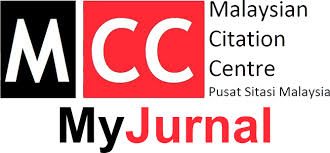The Application of Halal Logistic in Korean Halal Industry: A Model from Malaysia Perspective
Abstract
Since the emergence of the “halal” industry, it has influenced the pre-existing industrial structure by inducing global corporations and foreign governments to chase the regulation of “halal” certificate. In accordance with the fundamental notion of the “halal” industry, Majority of works related to “halal” industry must retain “halal” certificate regulated by certification bodies of diverse countries. Countless corporations that have the intention to advance into “halal” market started to dive into building plan of the domestic “halal” industry by complying conditions required by “halal” regulation and “halal” logistics is one of them esteemed to account for crucial status in near future among each section of “halal” industry on the side of conveyance of “halal” products. Nonetheless, it has not been perfectly settled up in the global “halal” industry so far due to underestimation of the importance of “halal” logistics compared with other sections belonged in the “halal” industry. Especially this feature predominantly reveals in Korea because of less “halal” perception of the domestic workers. Korea is one of the nations ached for participating in the “halal” market in the same way as other west unions and Asian countries which are not Islamic nations. Although there is the highlight of the “halal” industry from government and private companies, less infrastructure and information of “halal” industry are still barrier on the position of Korea and aspect of adjusting “halal” compulsory into the domestic industry. Not only them but also the absence of expert are on the issue because of the influx of uncertain notion and technique of “halal” into Korea. Besides “halal” logistics is also clumsy industrial part to Korea and the various environment which is engaged in the logistics industry includes not only technical parts but also policies. So as to contribute to making up of the definite establishment of “halal” logistics for the pre-existing industry of Korean logistics, the criterion of this research is based on MS 2400:2010 and pre-existence manual of Korean logistics industry which is allocated to every single factor consisting of the extant environment of logistics in Korea. Thus, this research denotes veiled factors which are not adjustable to “halal” logistics by analyzing the current status of Korean logistics by adding a comparison between MS 2400: 2010 and present status of domestic logistics.
References
Altuntaa, C., & Tuna, O. (2013). Greening logistics centers : The evolution of industrial buying criteria towards green. Asian Journal of Shipping and Logistics. https://doi.org/10.1016/j.ajsl.2013.05.004
Iskandar, M., Tan, I., Razali, R. N., & Husny, Z. J. (2012). The Adoption of “halal” Transportations Technologies for “halal” Logistics Service Providers in Malaysia. International Journal of Mechanical, Industrial Science, and Engineering, 6(3), 10–17.
Lee, H.-Y., Seo, Y.-J., & Dinwoodie, J. (2016). Supply chain integration and logistics performance: the role of supply chain dynamism. The International Journal of Logistics Management. https://doi.org/10.1108/IJLM-06-2015-0100
Lee, H, Y, Ooh, M, H, & Han T, S. (2013). A study for adapting halal supply chain management for promoting export of food industry. Journal of Hospitality and Tourism Studies.
Ngah, A. H., Zainuddin, Y., & Thurasamy, R. (2014). Adoption of “halal” Supply Chain among
Malaysian “halal” Manufacturers: An Exploratory Study. Procedia - Social and Behavioral Sciences, 129, 388–395. https://doi.org/10.1016/j.sbspro.2014.03.692
Roh, S. Y., Jang, H. M., & Han, C. H. (2013). Warehouse location decision factors in humanitarian relief logistics. Asian Journal of Shipping and Logistics. https://doi.org/10.1016/j.ajsl.2013.05.006
Soo-Jung Suh, Hye Mi Yu and Ki-Jeong Hong (2013) List of Intercepted Scale Insects at Korean Ports of Entry and Potential Invasive Species of Scale Insects to Korea. The Korean Society of Applied Entomology DOI: http://dx.doi.org/10.5656/KSAE.2013.03.0.007
Syazwan, M., Talib, A., Rubin, L., & Khor, V. (2013). Qualitative Research on Critical Issues In “halal” Logistics. Journal of Emerging Economies and Islamic Research, 1(2), 1–20. https://doi.org/10.13106/eajbm.2017.vol7.no4.27
Talib, M. S. A., Hamid, A. B. A., Zulfakar, M. H., & Chin, T. A. (2015). Barriers to “halal” logistics operation: views from Malaysian logistics experts. International Journal of Logistics Systems and Management, 22(2), 193. https://doi.org/10.1504/IJLSM.2015.071545
Tieman, M. (2013). Establishing The Principles In “halal” Logistics. Journal of Emerging Economies and Islamic Research, Vol.1, 1–13. Retrieved from http://www.jeeir.com/index.php/jeeir/article/view/32
Tieman, M., & Ghazali, M. C. (2014). Halal Control Activities and Assurance Activities in “halal” Food Logistics. Procedia - Social and Behavioral Sciences, 121, 44–57. https://doi.org/10.1016/j.sbspro.2014.01.1107
Tieman, M. (2015). Journal of Islamic Marketing “halal” clusters. Journal of Islamic Marketing Journal of Islamic Marketing Journal of Islamic Marketing, 6(3), 2–21. Retrieved from https://doi.org/10.1108/JIMA-05-2014-0034
Van der Spiegel, M., van der Fels-Klerx, H. J., Sterrenburg, P., van Ruth, S. M., Scholtens-Toma, I. M. J., & Kok, E. J. (2012). Halal assurance in food supply chains: Verification of “halal” certificates using audits and laboratory analysis. Trends in Food Science and Technology. https://doi.org/10.1016/j.tifs.2012.04.005
Yapa Mahinda BANDARA, Vikram GARANIYA, Christopher CHIN and Zhi Hui LEONG (2015) Improving Logistics Management Using Foldable/Collapsible Containers: A Case Study. The Asian Journal of Shipping and logistics
Yeo, G. T., Thai, V. V., & Roh, S. Y. (2015). An Analysis of Port Service Quality and Customer Satisfaction: The Case of Korean Container Ports. Asian Journal of Shipping and Logistics. https://doi.org/10.1016/j.ajsl.2016.01.002
Downloads
Published
Issue
Section
License
Author(s) shall retain the copyright of their work and grant the Journal/Publisher right for the first publication with the work simultaneously licensed under:
Creative Commons Attribution-NonCommercial 4.0 International (CC BY-NC 4.0). This license allows for the copying, distribution and transmission of the work, provided the correct attribution of the original creator is stated. Adaptation and remixing are also permitted.

This broad license intends to facilitate free access to, as well as the unrestricted reuse of, original works of all types for non-commercial purposes.
The author(s) permits HH Publisher to publish this article that has not been submitted elsewhere.
.png)

.jpg)

